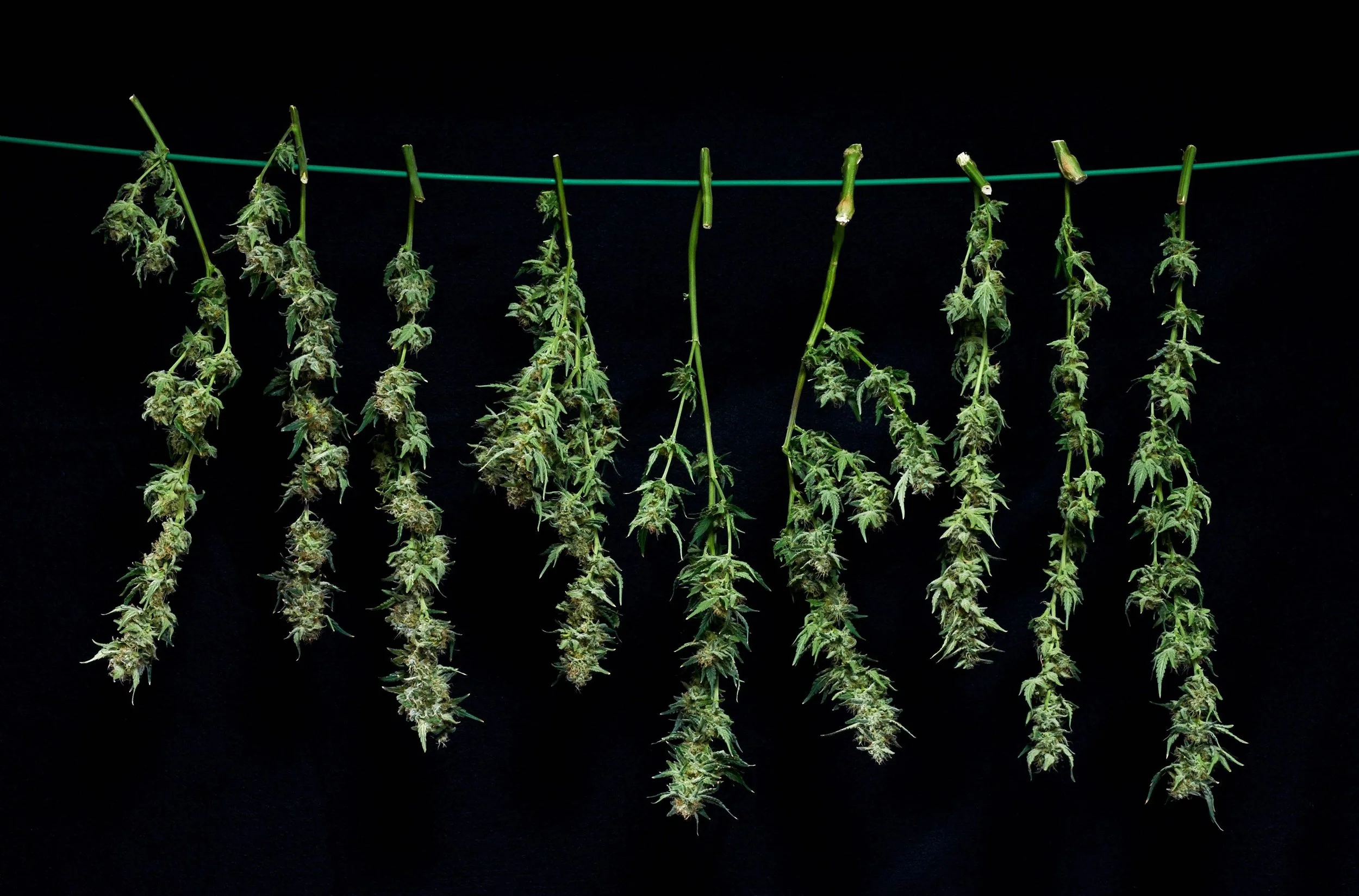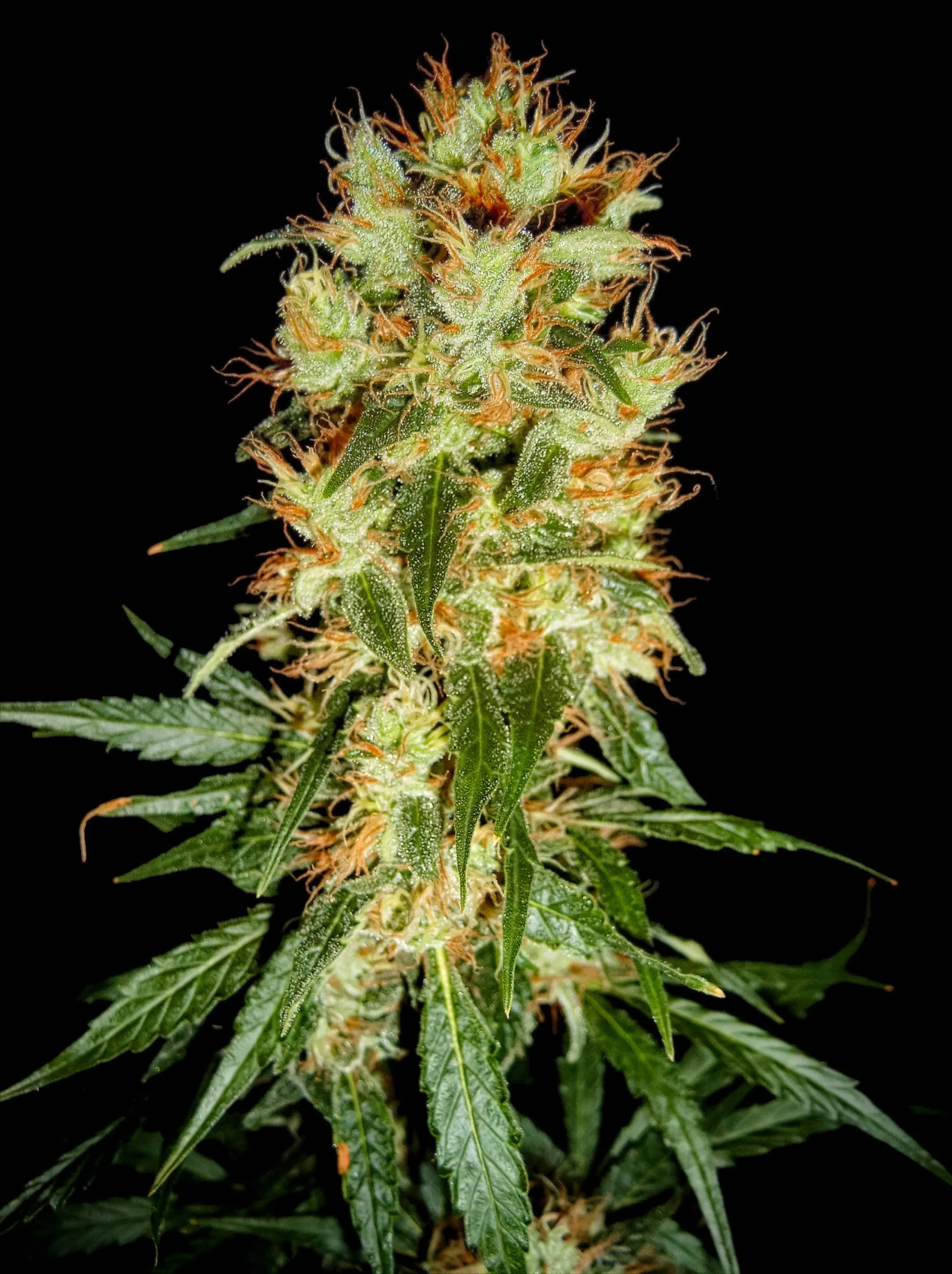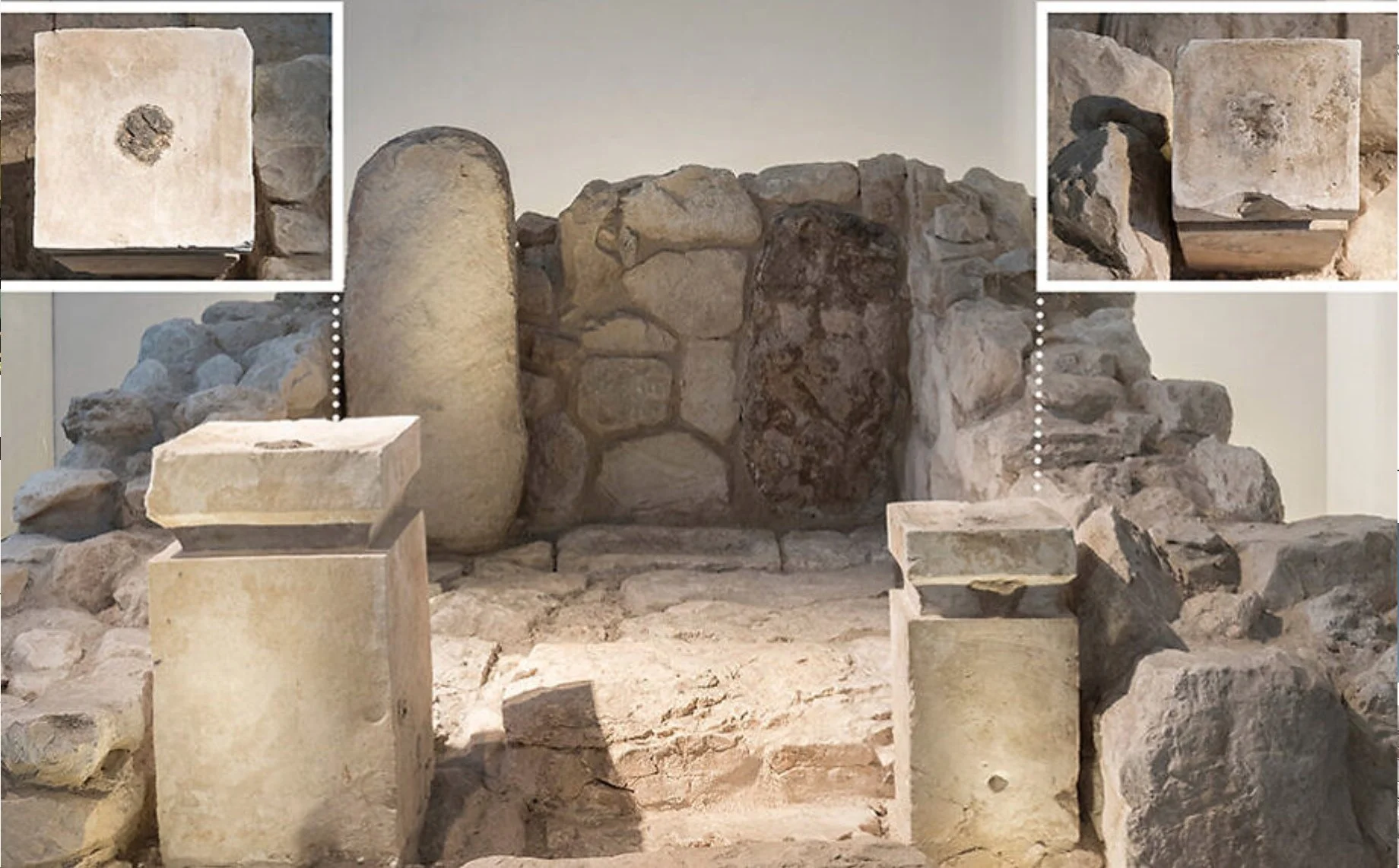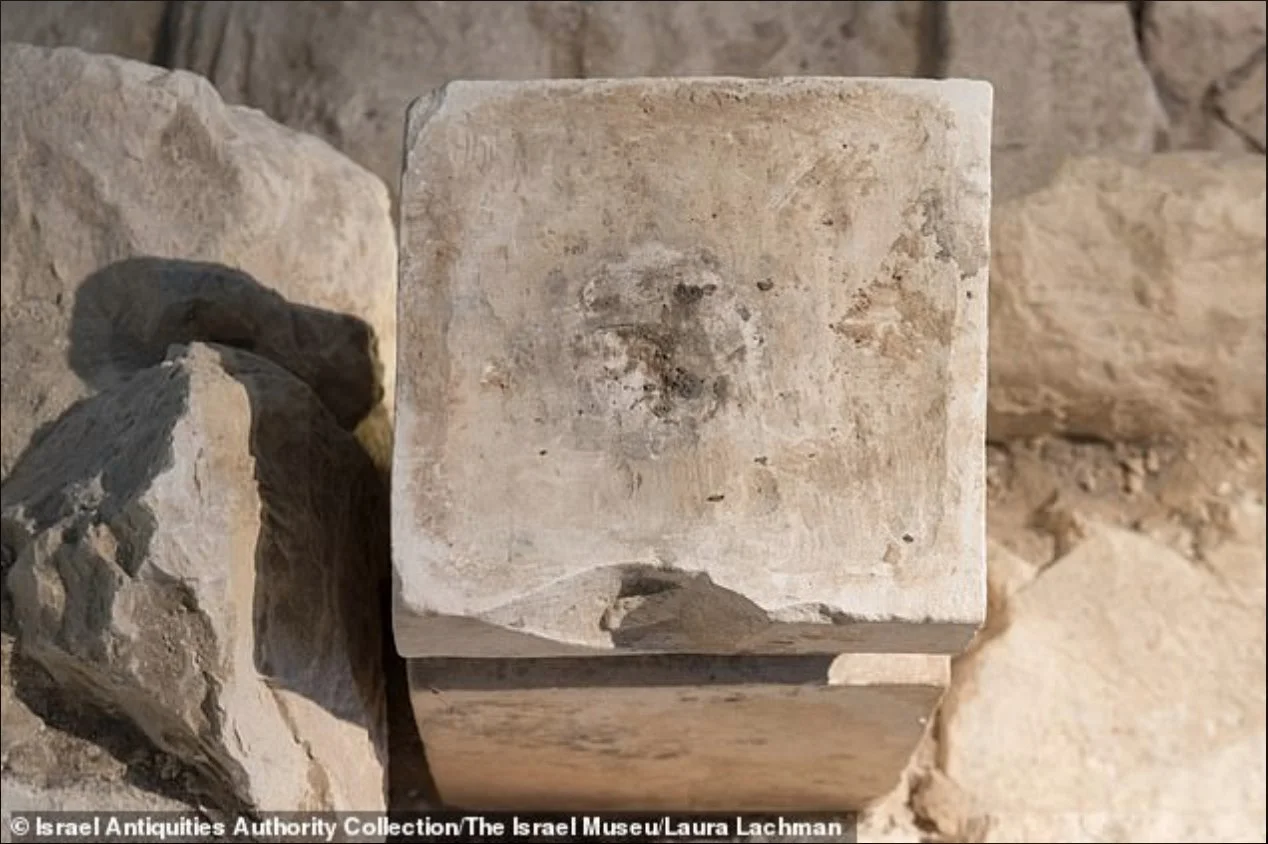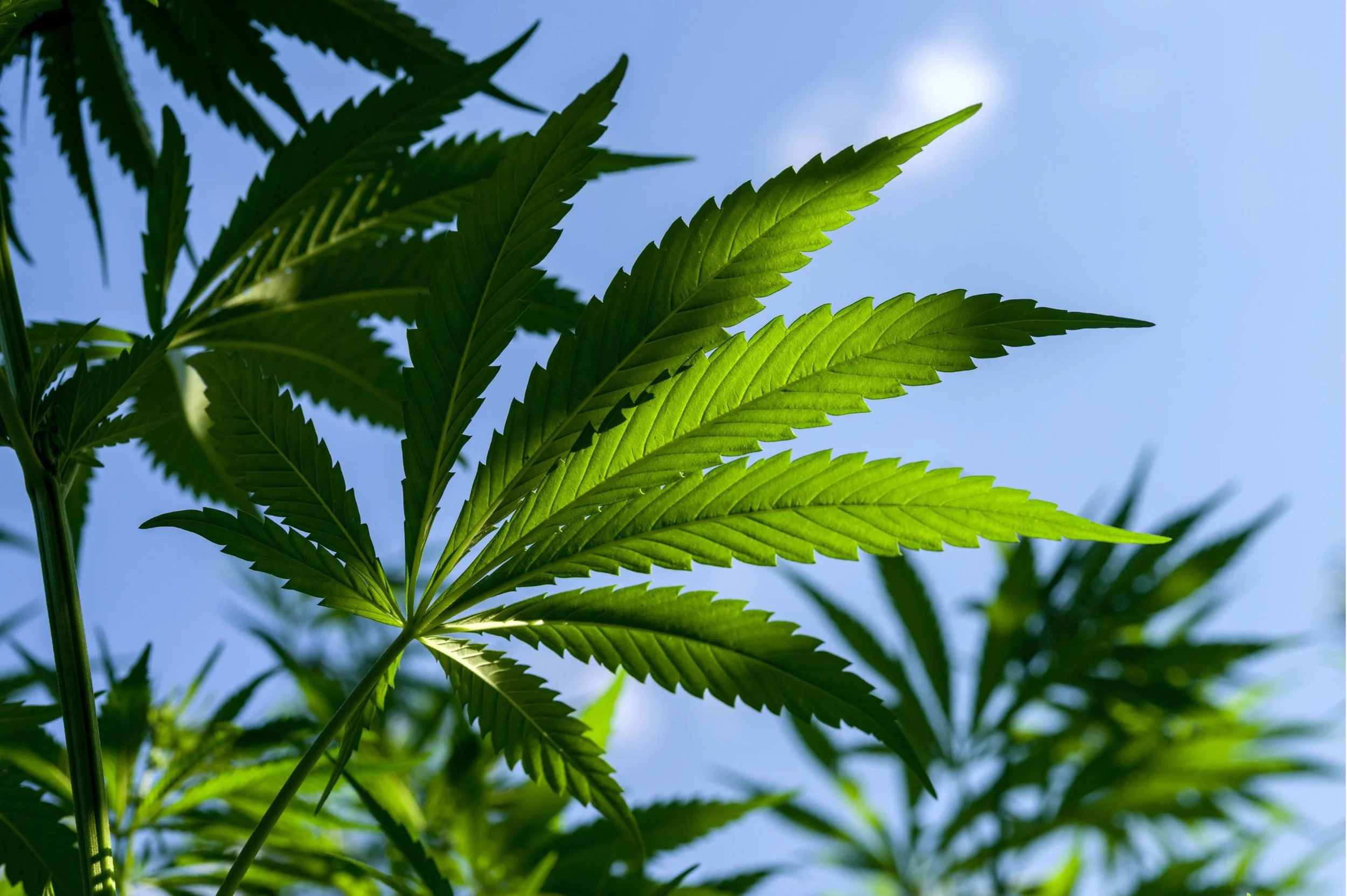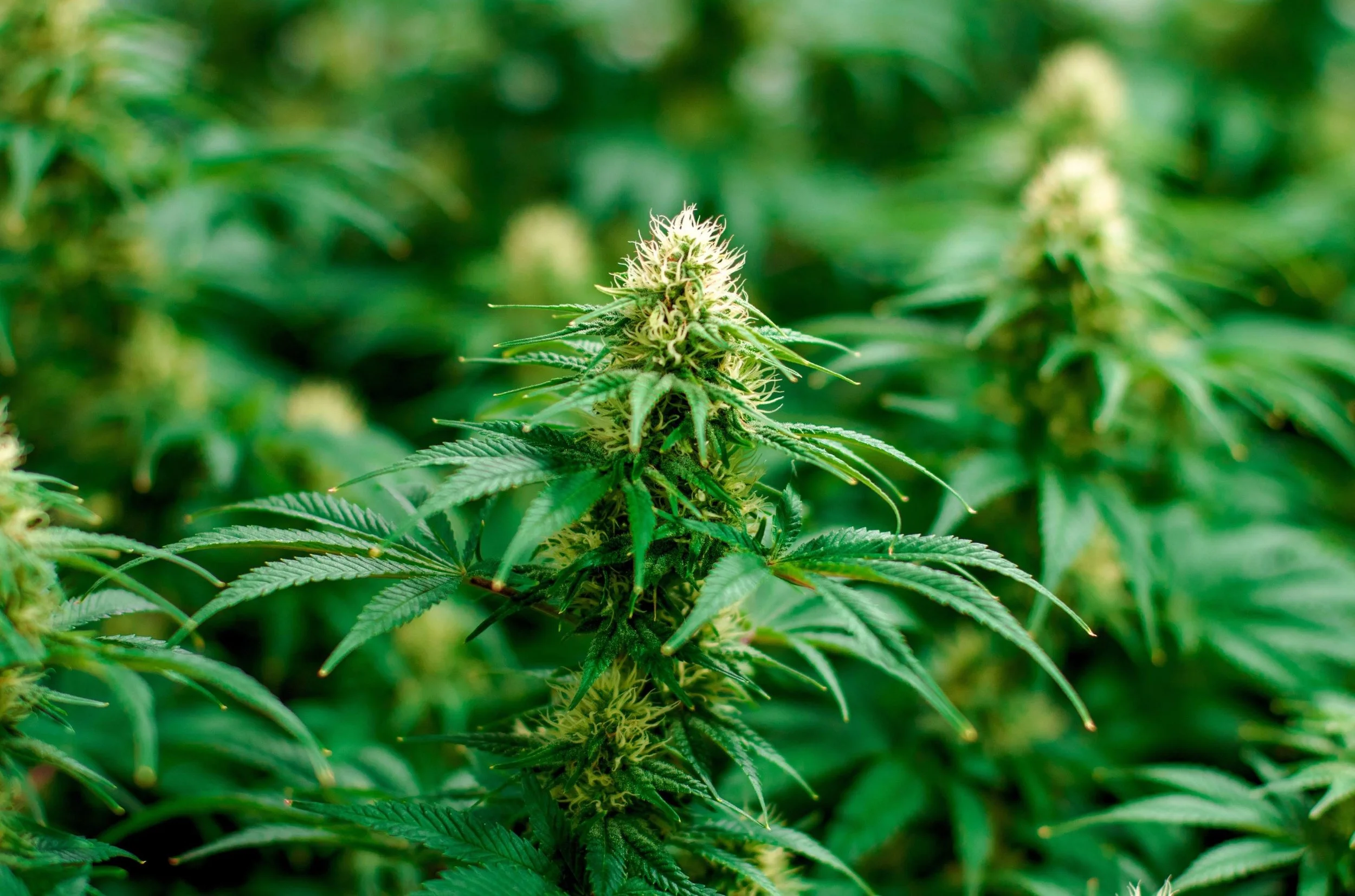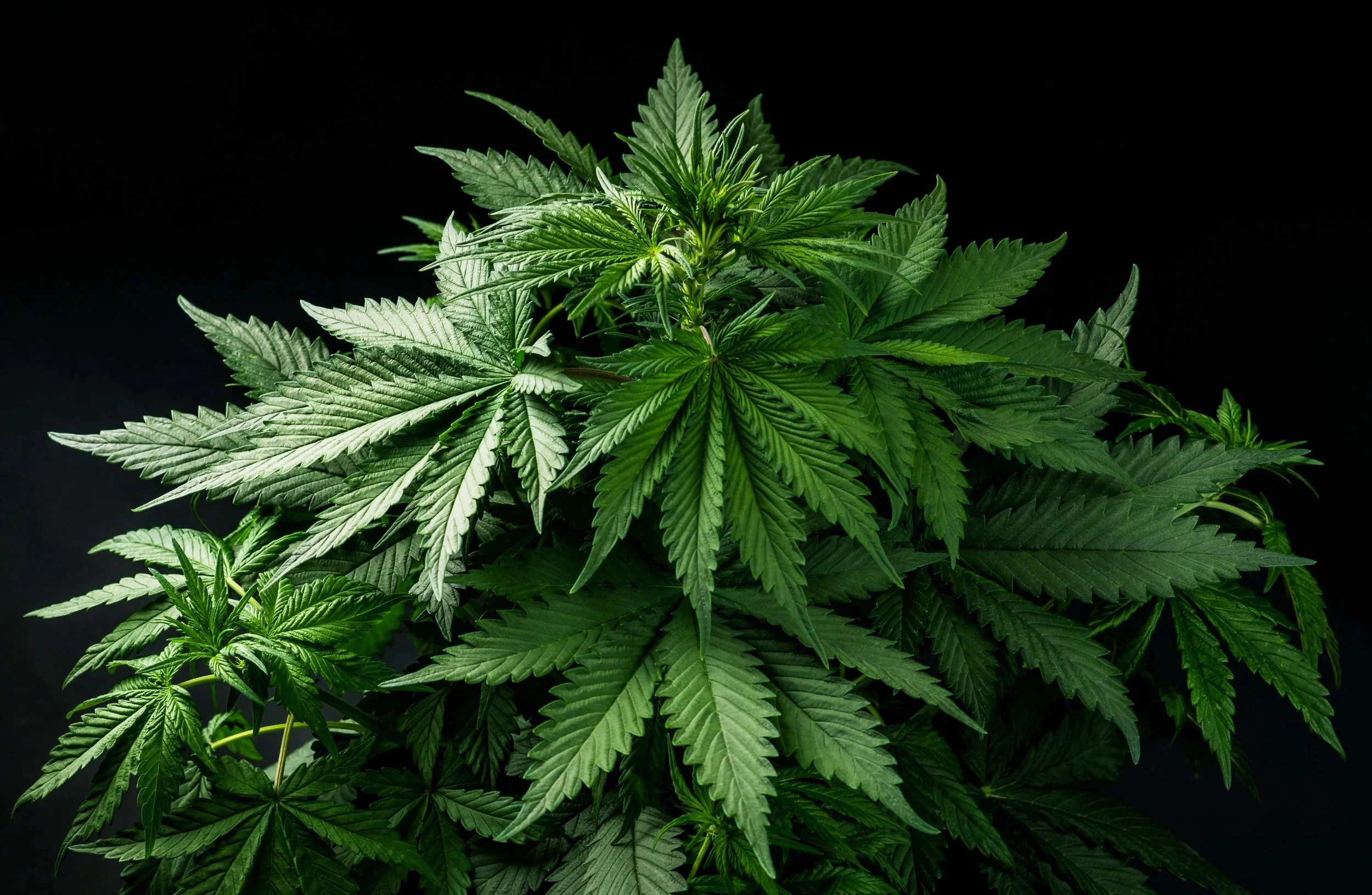Burning Questions:
Cannabis in Ancient Israel
By Scott Steinberg
In the sun-drenched expanse of the Negev Desert, a group of archaeologists embarked on an excavation that would rewrite the narrative of ancient Israelite religious practices. Their journey led them to the Temple of Tel Arad, an archaeological site in southern Israel, where they unearthed relics that hinted at a provocative, millennia-old secret. It’s not a temple in the traditional sense— but rather an ancient settlement that includes the remains of a fortress and a sanctuary. The sanctuary in particular is what is referred to as the "Shrine of Tel Arad" or the "Tel Arad Temple."
As dust-covered artifacts emerged from the desert sands, one discovery stood out: residue of burnt cannabis found on the temple's ancient altars. This extraordinary revelation shed light on a facet of ancient Israelite spirituality that had been shrouded in mystery.
Archaeological Revelation
The stone walls of the Tel Arad Shrine, which date back to the 9th century BCE, are still etched with the echoes of ancient rituals and celestial encounters. Yet, the discovery of specifically burnt cannabis on its altars was an unexpected twist to most religious scholars, challenging conventional beliefs about the religious practices of the time. It's a discovery that leads us back—to the original Jewish mysticism.
The two altars found at the entrance to a shrine at Tel Arad in southern Israel, at the Israel Museum in Jerusalem. (Israel Museum/Laura Lachman)Beyond Traditional Beliefs: The Mystical Roots of Judaism
Judaism, with its rich history of traditions and beliefs, has often been associated with religious orthodoxy and steadfast adherence to laws and commandments. Yet, beneath the surface, Judaism harbors a mystical current that flows through the ages. This undercurrent of spiritual electricity is the mystical essence of Judaism, known as Kabbalah.
Kabbalah is a path of cultivating higher consciousness; higher awareness of the spiritual realms. It’s a quest for union with the divine and an exploration of the hidden dimensions of existence. It is a spiritual tradition that resonates with the mystical experiences that often accompany the use of certain sacred plants and substances, including cannabis.
In this presentation, we explore the Temple of Tel Arad revelation and its implications on the mainstream religious ideological understanding of ancient Israelite worship rituals. We'll pull the mystical thread that weaves through Judaism, tracing it from the ancient altars of Tel Arad to the depths of Kabbalistic wisdom. This is a journey that aims to unveil the profound and mystical roots of Judaism, where tradition and transcendence coalesce.
Unearthing Ancient Secrets
As the archaeological team excavated the sacred grounds of the Temple of Tel Arad, their shovels revealed not just the dusty remnants of the ancient structure but the echoes of rituals that had taken place here over two millennia ago. The most astonishing find amidst the crumbling stones and timeworn artifacts was the discovery of ‘deliberately psychoactive’ burnt cannabis residue on the shrine's altars.
The presence of cannabis in a religious context is a surprise only to the uninitiated, and so the discovery sent intense shockwaves through the mainstream archaeological community. It was a window in to the mystical spiritual landscape of the ancient Israelites, a people often associated with more traditional religious practices. The discovery of burnt cannabis on the altars at the Tel Arad Temple is a tantalizing hint that spirituality in ancient Israel may have been far more multifaceted than most had previously imagined.
Obviously, the original prophetic mysticism must have been pretty far out when you think about it…
During the “revelation excavation”, Israeli archaeologists struck gold—or, more precisely, clumps of organic material. The organic material was located within the recesses of two altars strategically positioned at the threshold of a shrine at the core of this ancient site. This material harbored the legendary chemicals cannabidiol (CBD) and tetrahydrocannabinol (THC).
The Altars of the Tel Arad Shrine: What Lies Beneath
The incense offering was an integral part of worship in the First Temple period. Its roots stretch back to the First Temple era and are enshrined in the Hebrew Bible (Tanakh), notably in the book of Exodus, where it is closely associated with the Tabernacle and, subsequently, the First Temple in Jerusalem. The "Arad Inscriptions" also stand out as confirmation to the ritual of burning incense. The incense offering was highly symbolic in Jewish tradition, representing the ascent of prayers and the sweetening of judgment.
Solomon’s Temple, the central Temple in Jerusalem, featured a specific altar called the "Golden Altar of Incense.” One could find the golden incense alter in the Holy Place, just outside the Holy of Holies. Crafted from acacia wood, its surface gleamed with pure gold, and it bore horns akin to other altars. In Kabbalah, the choice of materials and substances used during rituals often holds symbolic significance. [Read about how horns signify connection to the divine, as mentioned here in our article about Moses, the Horned Prophet]… The use of Acacia wood in the construction of the Tabernacle, as well as its association with the burning bush story, likely conveys a deeper spiritual message. Acacia wood is heavily rich in the psychedelic compound DMT. A daily Temple ritual involved the ceremonial burning of incense on this psychedelic altar within Solomon’s Temple, conducted twice daily, both in the morning and evening. Remarkably, the Arad Shrine appears to be a scaled-down rendition of Solomon's Temple.
The paper by the discovering archeologists suggested, however, that unlike the aromatic herbs typically chosen for sacred incense, this particular substance wasn't meant to simply titillate their sense of smell. The researcher’s undeniable conclusion? This ancient congregation was seeking more than fragrant devotion; they were igniting the fires for an altogether different kind of spiritual journey. [Insert high-five here]. It’s worth noting that many people do find the smell of cannabis to be delightful. Could it not have been intended for both use cases?
At any rate— the altars of the Tel Arad Temple, adorned with burnt cannabis, served as a sacred bridge between the mortal realm and the divine. They were portals to a world of spiritual exploration and mystical connection in a society unburdened by the persecution of higher consciousness.
“To induce a high you need the right temperature, and they clearly knew this well, just as they knew which fuel to use for each substance,” Namdar, of Israel’s Agricultural Research Organization–Volcani Center in Bet-Dagan, told the Haaretz daily.
The study also reported:
“Arad provides the earliest evidence for the use of cannabis in the Ancient Near East. Hallucinogenic substances are known from various neighboring cultures, but this is the first known evidence of hallucinogenic substance found in the Kingdom of Judah.”
“The use of [other] psychoactive materials is also well known in ancient Near Eastern and Aegean cultures since prehistory. It seems likely that cannabis was used at Arad as a deliberate psychoactive, to stimulate ecstasy as part of cultic ceremonies. If so, this is the first such evidence in the cult of Judah.”
The word “cult” used academically just means culture and does not hold derogatory intention.
Cannabis, with its mind-altering properties, has long been used by various cultures worldwide to facilitate mystical experiences, visions, and encounters with the divine. Its presence on the altars suggests that the ancient Israelites shared this universal longing for tangible spiritual transcendence, seeking communion with the sacred through altered states of consciousness.
A Journey Through Time: The Temple's Significance
The Temple of Arad was more than just a place of worship; it was a nexus point where the human and the divine converged. Its significance lies not only in the rituals performed within its walls but in the very essence of what those rituals represented—a quest for the divine encounter—direct mystical experience.
In this ancient temple, priests and worshippers alike sought to bridge the gap between heaven and earth. Rituals and sacrifices were performed with a fervent desire to commune with the divine, to receive visions, and to attain spiritual insights. The presence of cannabis on the altars now raises the question: Was cannabis used as a key to unlock the doors of perception, leading to these mystical encounters?
In the ancient Near East, cannabis was known for its therapeutic properties and was used for a range of purposes, including pain relief and relaxation. However, its use in religious or mystical contexts was not uncommon either.
As we contemplate the role of cannabis in the rituals of ancient Israel, we must remain open to the possibility that it served a dual purpose—as a means to access altered states of consciousness for spiritual exploration and as a remedy to alleviate suffering and connect with the sacred.
The Historical Context of Cannabis Use
Entheogens and Altered States
Beyond the historical context, we must also delve into the mystical experience itself. Entheogens, including cannabis, induce altered states of consciousness. These altered states can range from heightened perception to profound spiritual experiences.
Many cultures, across different epochs, incorporated the use of entheogens into their religious practices. For the ancient Israelites, these altered states were likely seen as a means to access the divine realm, receive prophetic visions, and gain spiritual insights. The rituals performed at the Temple of Arad, with the aid of cannabis, could have been a doorway to the mystical, where the boundaries between the earthly and the heavenly dissolved.
The Intersection of Cannabis and Jewish Mysticism
The Prophetic Roots of Jewish Mysticism
Kabbalah, with its intricate symbolism and esoteric teachings, finds its roots in the prophetic experiences of ancient Israelite prophets. These prophets, revered for their divine visions and revelations, absolutely tapped into altered states of consciousness to commune with the sacred. Whether that was due to meditation, endogenous dumps of DMT, or exogenous consciousness technologies, the goal was to tangibly percieve G-d and the higher realms.
The use of cannabis, with its potential to induce altered states, may have played a role in these prophetic experiences— at least for some. The mystics of Kabbalah, drawing inspiration from their prophetic predecessors, embraced the notion that certain substances could serve as catalysts for mystical encounters.
Central to Kabbalah is the idea of achieving union with the divine—an experience that transcends ordinary human perception. Cannabis, with its capacity to alter consciousness, can facilitate this mystical effort. It can work as a tool to pierce the veil between the material and the spiritual, a way to experience the presence of the divine.
Cannabis can be a catalyst for mystical encounters.
Within the context of Kabbalah, the use of cannabis may have been a means to achieve the transcendence of the ego and the merging of the individual soul with the cosmic soul. The altered states induced by cannabis could serve as a chemical gateway to heightened spiritual awareness, providing glimpses of the divine realms.
The Path to Divine Union
Mystical Experiences and the Quest for Enlightenment
Jewish mystics, steeped in the teachings of Kabbalah, have long pursued mystical experiences as a means to attain enlightenment. These experiences often involve intense spiritual visions, a profound sense of unity with the universe, and a deep understanding of the interconnectedness of all existence.
The potential use of cannabis within the context of Jewish mysticism raises questions about the nature of these mystical encounters. Did cannabis play a role in the visions and revelations of Kabbalistic masters? Did it serve as a vehicle for transcendence, allowing mystics to access the hidden realms of existence? Perhaps it was just one of the mysterious spiritual technologies in the prophetic toolkit.
Jewish mystics, steeped in the teachings of Kabbalah, have long pursued mystical experiences as a means to attain enlightenment.
Implications and Reflections
Rethinking Ancient Judaism
For centuries, the prevailing Christianized narrative depicted the Israelites essentially as fundumentalist Christians - just without Jesus. But that’s kind of ridiculous, isn’t it?
The presence of cannabis within the sacred context of the Temple of Arad suggests that ancient Israelite spirituality may have encompassed a wider and more enjoyable range of practices than previously assumed. It prompts us to reconsider the diversity of religious experiences and the quest for transcendence within the culture of the time.
Cannabis and the Spiritual Landscape of Ancient Israel
Mystical Roots: A Deeper Understanding
This discovery also invites us to deepen our understanding of the mystical roots of Judaism. While Kabbalah has long been recognized as a path to higher consciousness within the tradition, the connection to cannabis opens new avenues for exploration. It highlights the potential role of entheogens in ancient Jewish mysticism, challenging us to explore this intersection more thoroughly.
The Discovery Reshapes Our Perception.
The presence of cannabis in ancient Israelite rituals is a new variable in the equation which prompts us to approach history with a more open mind (kind of like how cannabis encourages), and acknowledge that the quest for spiritual enlightenment and communion with the divine can take many forms— not just the rigid dogmatic ideas laid out by anti-semites like Martin Luther or the Catholic Church (thank the One true Living G-d). This revelation encourages us to look beyond the surface of the rituals and seek the deeper, often hidden, electric currents of mysticism.
Cannabis, Religion, and Higher Consciousness
As we reflect on the implications of this discovery, it becomes clear that the relationship between cannabis, religion, and higher consciousness is a timeless and cross-cultural phenomenon. The ancient Israelites, like many other cultures throughout history, probably recognized the potential of certain substances to facilitate mystical experiences. I mean… we are talking about a pretty intellectually and spiritually advanced (highly conscious) society here, after all.
Contemporary Relevance and Reflections
The intersection of cannabis and spirituality continues to be relevant in contemporary society. As more individuals explore the potential of entheogens for spiritual growth and self-discovery, we are reminded that this quest for the direct mystical experience transcends time and tradition.
This revelation invites us to engage in a broader conversation about the role of consciousness-altering substances in spirituality and religion today. So, when you get those looks of disapproval from your well-meaning Christian neighbors, point them toward the Tel Arad Temple.
It is truly okay to approach these discussions with an open mind. If this really is a foundational aspect of Israelite worship rituals that has been so aggressively persecuted, this needs to be addressed. What does it mean that there has been such an effort to keep people from direct mystical experience through the use of entheogens? To my skeptical readers, be assured—make no mistake- that the mystical experience can take many forms and that the boundaries between the material and the spiritual are often more porous than we might think. The mystical thread that weaves through ancient Israelite rituals, Jewish mysticism, and the contemporary exploration of consciousness continues to call us forward into the future, toward the hidden realms of the human spirit and the mysteries of existence.
Cannabis and the Sacred: A Paradigm Shift
The discovery of burnt cannabis residue on the altars of the Temple of Arad represents a paradigm shift. So much so, that you can’t spell “paradigm shift” without “Arad.” It challenges preconceived traditional notions and opens a door to a more intricate and multifaceted religious landscape than previously envisioned.
The Impact of the Arad Discovery
The cross of cannabis and Jewish mysticism resonates as a profound connection between ancient wisdom and modern insights. It bridges the gap between the rituals of the past and the ongoing exploration of consciousness in the present. It underscores the timeless nature of the mystical journey—a journey that transcends cultural, temporal, and spiritual divisions.
The impact of the Arad discovery goes beyond the confines of archaeology. This revelation encourages us to explore the mystical dimensions of our own lives and traditions, to seek the divine spark within and transcend this lower realm, and to embrace the unending journey of self-discovery. Cynics must reevaluate their understanding once and for all. The sacred is not confined to the boundaries of modernized Christian tradition but is a living force that continues to shape our perception as more is revealed to humanity. Thank G-d the real thing is more exciting than traditional fundamentalism— right?
It really is good news.
As we contemplate the nature of G-d and the mysteries of existence, may we find inspiration in the ancient rituals of the Tel Arad Shrine. May we honor the profound connection between the sacred and the mysterious, and may our own mystical journeys continue to illuminate the path toward higher consciousness and deeper understanding of the divine.
